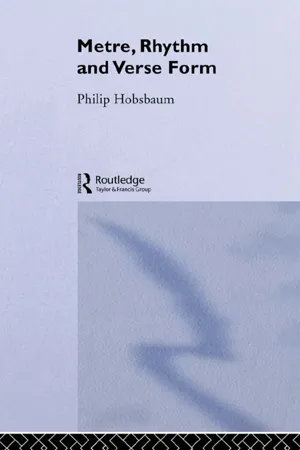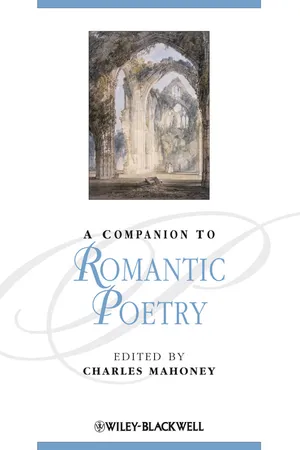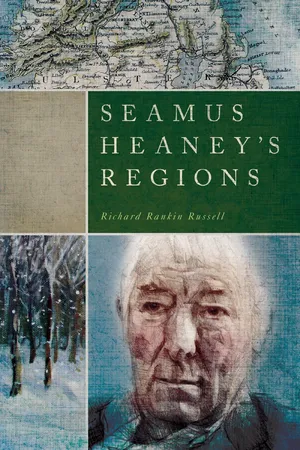Literature
Terza Rima
Terza rima is a form of poetry that consists of tercets, or stanzas of three lines, with an interlocking rhyme scheme. The second line of each tercet rhymes with the first and third lines of the following tercet, creating a chain-like structure. This form is commonly associated with Italian poet Dante Alighieri and is often used in epic poetry and sonnets.
Written by Perlego with AI-assistance
4 Key excerpts on "Terza Rima"
- eBook - ePub
- Philip Hobsbaum(Author)
- 2006(Publication Date)
- Routledge(Publisher)
8VERSE FORMS (I)
This chapter will seek to define some of the principal verse forms in English involving line groups of three or more.Terza Rima was invented by the Italian poet Dante for his vast work La Divina Commedia . It consists of three-line sections, interlinking one with another. The first and third lines of each section rhyme, and the second line rhymes with the first and third lines of the next section, thus: a b a b c b c d c d e d e f e. Any series of three-line sections, also known as tercets, may be brought to a conclusion by a single line rhyming with the second line of the three-line section immediately preceding. Dante wrote his sections in eleven-syllable lines, also termed hendecasyllabics.In English, Terza Rima has been more discussed than practised. Chaucer introduced it in a minor poem, ‘Complaint to his Lady’. However, a more influential exponent of this particular form was Sir Thomas Wyatt (1503–42). He was a contemporary and friend of the inventor of blank verse, the Earl of Surrey and, like him, was a close student of the Italians. Wyatt employed Terza Rima in his three satires, mostly complaining of life at court. The first is in the shape of a letter addressed to his friend, Sir John Poins (or Poyntz). The metre is technically five-stress, but it is very much variegated into sprung rhythm: - Marc Föcking, Susanne A. Friede, Florian Mehltretter, Angela Oster(Authors)
- 2023(Publication Date)
- De Gruyter(Publisher)
53.2.1.1 Forms and Practices of Terza Rima Writing
The terzina, which probably has its origins in the serventese, was coined by Dante as an epic stanza, but was not defined terminologically until some time after him (Vecchi Galli 2008 , 44), initially primarily by the term terzetti. In the sixteenth century, the terzina was also used as a metrical form for the elegy and the eclogue.Large-scale encyclopaedic poems with an allegorical component were one of the main fields of application of the Terza Rima, and in this genre a line of tradition continues from Dante’s Commedia, Boccaccio’s Amorosa visione and Petrarch’s Trionfi into the Cinquecento. Important texts in the Trecento are Fazio degli Uberti’s Dittamondo and Federico Frezzi’s Quadriregio, in the Quattrocento Matteo Palmieri’s Città di vita, and finally in the first half of the Cinquecento Giovanni Filoteo Achillini’s 100-canto didactic poem Il Fedele.An important metrical exception among these didactic poems is L’Acerba by Cecco d’Ascoli, which was written in the Trecento: Cecco openly deviates from Dante’s model by, among other things, undermining the rhyming pattern used by Dante, combining as he does two tercets into six verses, which involves superimposing a twofold structure on Dante’s tripartite system (Ferrilli 2016 ).Another important field of application of the Terza Rima was within narrative historiography. One of the most influential historiographical terzina poems is probably Antonio Pucci’s Centiloquio from the late Trecento. Equally significant within this tradition are Niccolò Machiavelli’s Decennali dating from the beginning of the Cinquecento. Even though this type of Terza Rima poetry does have a connection to the Commedia and the Trionfi, in that the latter repeatedly integrate historical elements, a considerable distance exists between true historiographical texts and the narrative poems written by Dante and Petrarch: while in the Commedia and the Trionfi, the historical elements are woven into the overall allegorical (or, from a modern point of view, even fictional) text, the historical narrative is clearly the dominant level of content in works such as the Centiloquio or the Decennali- eBook - ePub
- Charles Mahoney, Charles Mahoney(Authors)
- 2010(Publication Date)
- Wiley-Blackwell(Publisher)
Terza Rima too nearly resembles the couplet and that one is therefore inclined “to read on as if it were a sort of interchained couplet verse” (1923: 3. 106). (In his earlier remarks on Wyatt and Surrey’s innovations in this form, he characterizes them as “interlaced heroic couplets” (1923: 1. 311).) Additionally, there is the challenge of writing in English after the manner of Dante, with double rhymes, few internal pauses, and infrequent enjambment between the individual tercets, all of which contribute to what Saintsbury calls the slow motion and stanzaic integrity of the “Dantean tercet” (1923: 3. 107).Terza Rima needn’t be written, however, under such strict adherence to Dante’s model. In fact, all the Romantic innovations in this form may be said to be characterized by an entirely different quality, namely, fluidity, or forward momentum. (I am thinking here not only of Shelley’s poetry, mentioned above, and Byron’s The Prophecy of Dante , but also of the contemporaneous translations from Dante’s Commedia by Shelley, Byron, and Hunt; see below.) Though Saintsbury reads Terza Rima in terms of certain reflex actions that slow it down, I would argue instead that, certainly in Shelley’s handling of it, the concatenated rhymes almost effortlessly propel the poetry forward, as each tercet simultaneously relinquishes and announces a rhyme. As James Merrill understood, “No verse form moves so wonderfully. Each tercet’s first and third line rhyme with the middle one of the preceding set and enclose the new rhyme-sound of the next, the way a scull outstrips the twin, already dissolving oarstrokes that propel it” (1986: 89). With its attention to the fluidity of motion, the dissolution of rhyme sounds in their own wake as it were, Merrill’s metaphor here is more than apt for a reading of Shelley’s innovative Terza Rima in the “Ode to the West Wind,” a poem characterized throughout by tropes of motion as well as commotion. In what follows here, I hope to show how Shelley’s manipulation not merely of rhyme but also of meter propels the poem forward, through each section and across the verges that separate one tercet and one “sonnet” from the next. Integral to the significance of Shelley’s practice here is that in the composite form of the poem as he has devised it, he has simultaneously allowed scope for the self-propulsive quality of the Terza Rima - eBook - ePub
- Richard Rankin Russell(Author)
- 2014(Publication Date)
- University of Notre Dame Press(Publisher)
As we will see, however, he feels that Dante himself is a figure who took unorthodox positions and reveled in artistic freedom; imitating Dante for Heaney thus really is the highest form of flattery. To take the second literary figure first, Heaney would note in October 1986, in “The Government of the Tongue,” one of his T.S. Eliot Memorial Lectures delivered at the University of Kent, about Osip Mandelstam’s approach to Dante, that “a traditional approach to Dante . .. might involve some attention to the logical, theological and numerological significances which devolve from the number 3, there being three Persons in the Holy Trinity, three lines in each stanza of The Divine Comedy, three books in the whole poem, thirty-three cantos in each book, and a rhyme scheme called Terza Rima. All this can press upon the mind until Dante is gradually conceived of as some kind of immense scholastic computer.” 44 The disapproval fairly drips off this last phrase and Heaney quickly hastens to tell us that Mandelstam rejected this notion of Dante “as the great example of a poet whose tongue is governed by an orthodoxy or system,” observing that, for example, Mandelstam affirms Dante’s Terza Rima not only by reclaiming the form as vernacular but also by suggesting that “the three-edged stanza is formed from within, like a crystal, not cut on the outside like a stone. The poem is not governed by external conventions and impositions but follows the laws of its own need.” 45 This important last statement, and the general thrust of my argument below, together suggest that Heaney’s use of a heavily modified Terza Rima, really better called “individually rhyming, self-contained tercets” (to coin a hugely awkward term), in the middle and third sections of Station Island, “follows the laws of its own need” and thus freely imitates and borrows from both Dante and Eliot, for that matter
Index pages curate the most relevant extracts from our library of academic textbooks. They’ve been created using an in-house natural language model (NLM), each adding context and meaning to key research topics.
Explore more topic indexes
Explore more topic indexes
1 of 6
Explore more topic indexes
1 of 4



